This is not the tale of deadbird’s Proton Hybrid Hoody, of which I wrote, “Don’t expect to wear the Proton Hybrid and have the active, inactive, start, stop, and cold-not-cold layering systems perfectly dialed. But it’s close.”
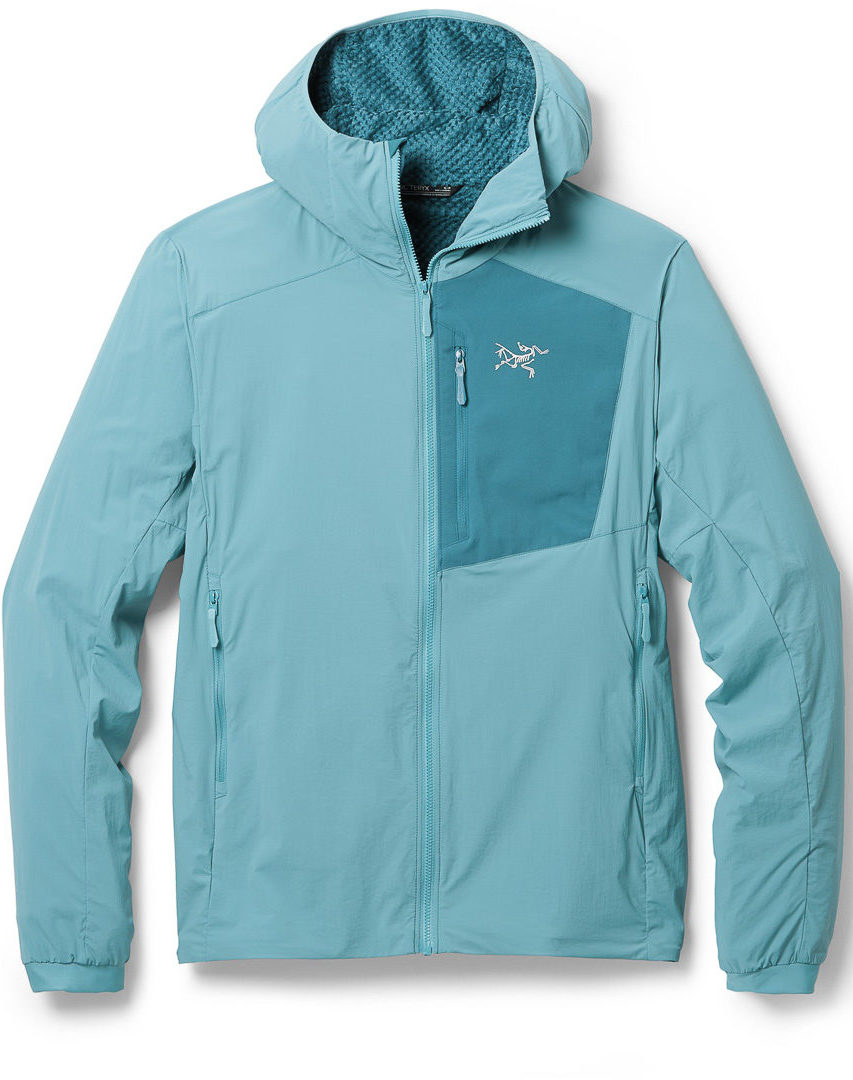
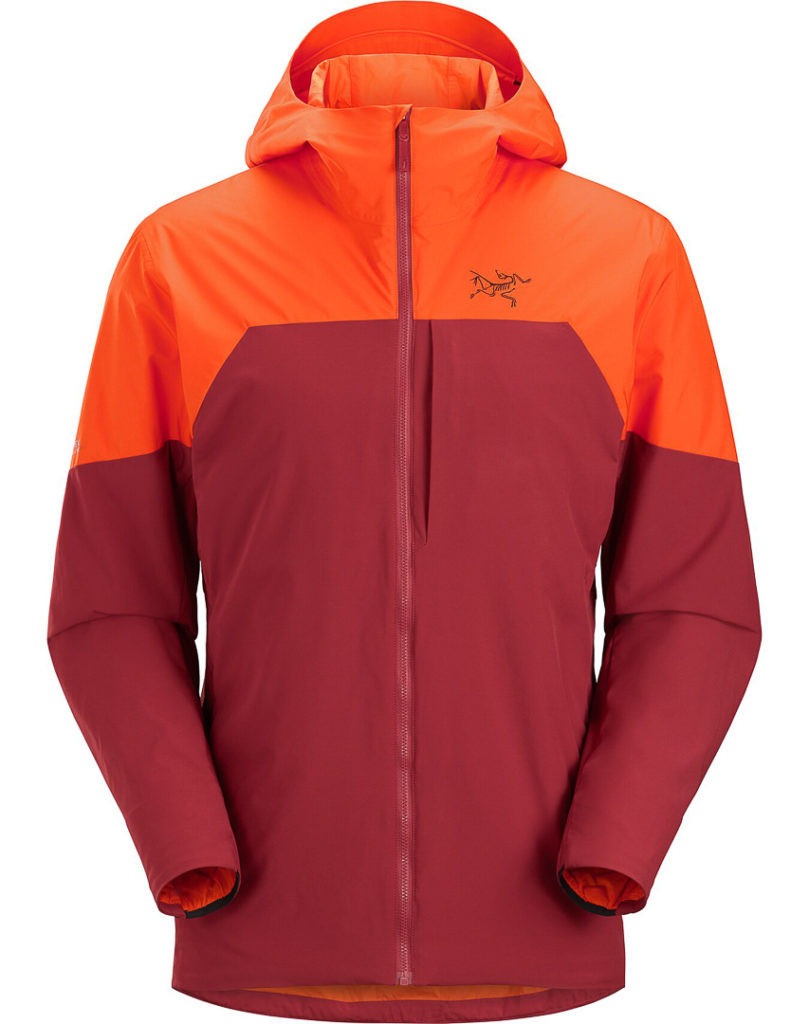
This “but it’s close” reference point is a good place to begin thinking about the Proton Lightweight Hoody, too.
Let’s also stay aware of the naming conventions here. Both jackets are in the Proton line; one is marketed for ski touring and likely some alpine-type climbing, while the Lightweight Hoody gets hyped more as a climbing/alpine rock piece. With either jacket, the preferred activities blur. I’ve flipped and flopped back and forth this winter between the Hybrid Hoody and the Lightweight Hoody.
Both are sweet. It is the opposite of picking your poison when choosing a jacket. For someone like me who has a jacket problem, it’s like picking your bliss.
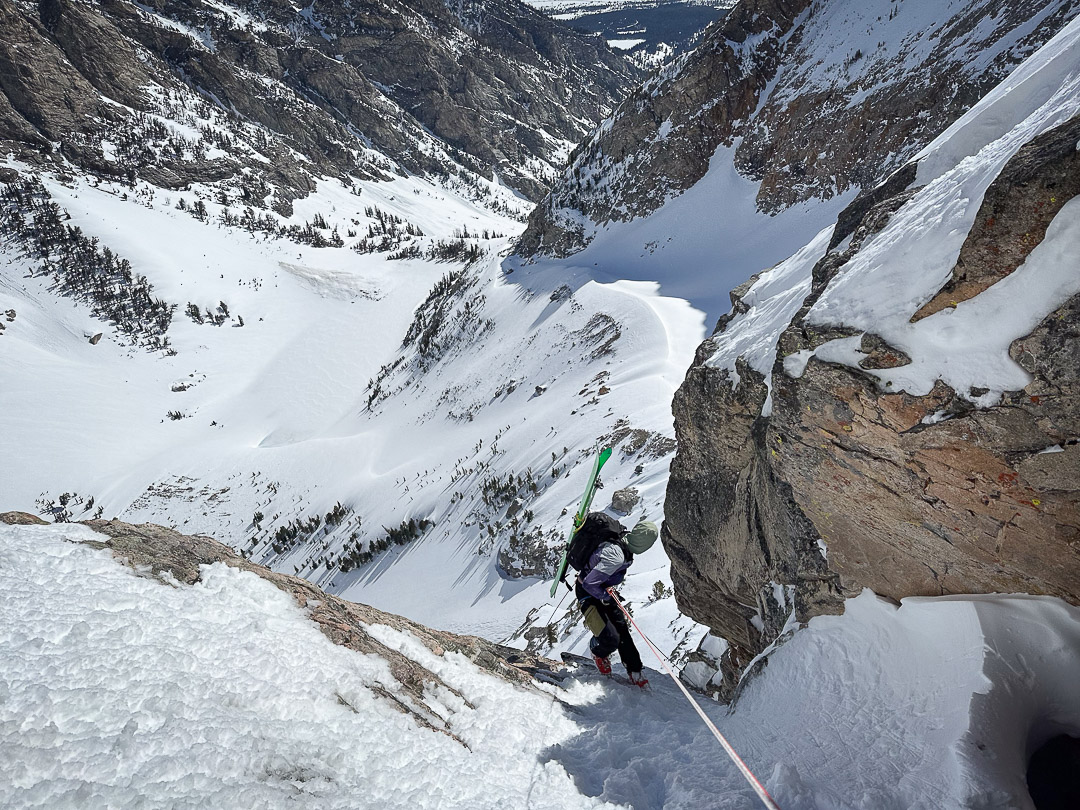
What might make the Hybrid Hoody more of a ski tourer’s friend is its hemline stretching beyond the waist—just slightly. A semi-weather proof Gore-Tex INFINIUM™ used on the yoke/hood to assist with protection during light snowfall and drizzle. It also pretty much shuts down airflow. Otherwise, the jacket uses a Fortius Air 50 face fabric (the 50 refers to the denier) and light synthetic insulation throughout, except from the elbows to the wrist—that zone is sans insulation. The piece is a gold nugget of active insulation. It breathes fairly well and allows ample air/wind to permeate the core and arms to help mitigate overheating when doing high-exertion activities like skinning. (You can unzip the full zip, too, and effectively dump heat.)
I often wear an old long-sleeved Patagonia lightweight baselayer under the Hybrid Hoody. 90% of the time, when temps aren’t too cold (25°F +), I can top out on a skin, transition, descend, and remain warm. If it’s cold and epically windy, I may throw on a puffy for the descent. In my region, we do a lot of short-run-yo-yoing mid-winter. Wearing the Hybrid Hoody makes for more efficient transitions as I’m usually not layering up before the descent or layering down pre-skin.
The whole Goldilox thing is overplayed, and she should have let the three bears be—but I’ve sung the high praise of the Hybrid Hoody this season, and if Goldilox, despite her trespassing, is a standard, then so be it; it’s a Goldliox piece.

Exit Goldilox for a moment, which brings us to the Lightweight Hoody in the Proton line. Its hemline is shorter than the Hybrid Hoody, and a Fortius Air 20 fabric is used throughout. The interior is lined with a nano spun type fleece called Octa® Loft knit insulation—which looks spot on to TNF’s Futurefleece hoody’s lining. (For the past few seasons, that’s been my fleece hoody for touring.)
The sad thing is that with the lining attributes of the Lightweight Hoody’s Octa Loft, the TNF hoody has stayed home. I’ve not worn it once this season.
With the Octa Loft lining, I usually can get away with wearing a Patagonia Ridgeflow T-shirt as my base layer under the Lightweight Hoody. The face fabric’s CFM is ample enough to use this jacket in relatively high exertion activities. Like the Hybrid Hoody, it is well-designed and true to the marketing hype of its active insulation designation.
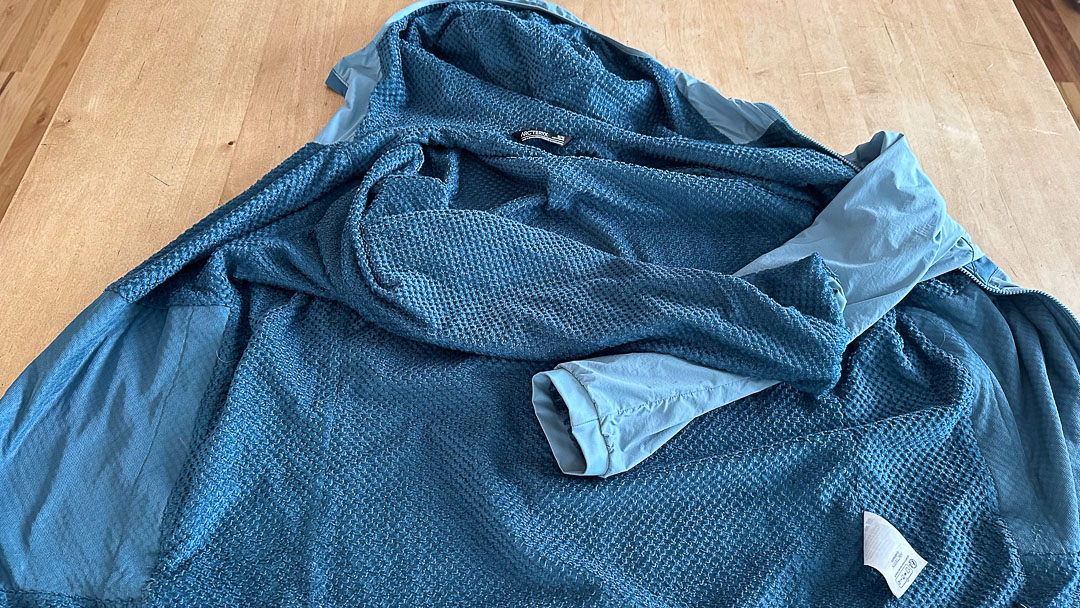
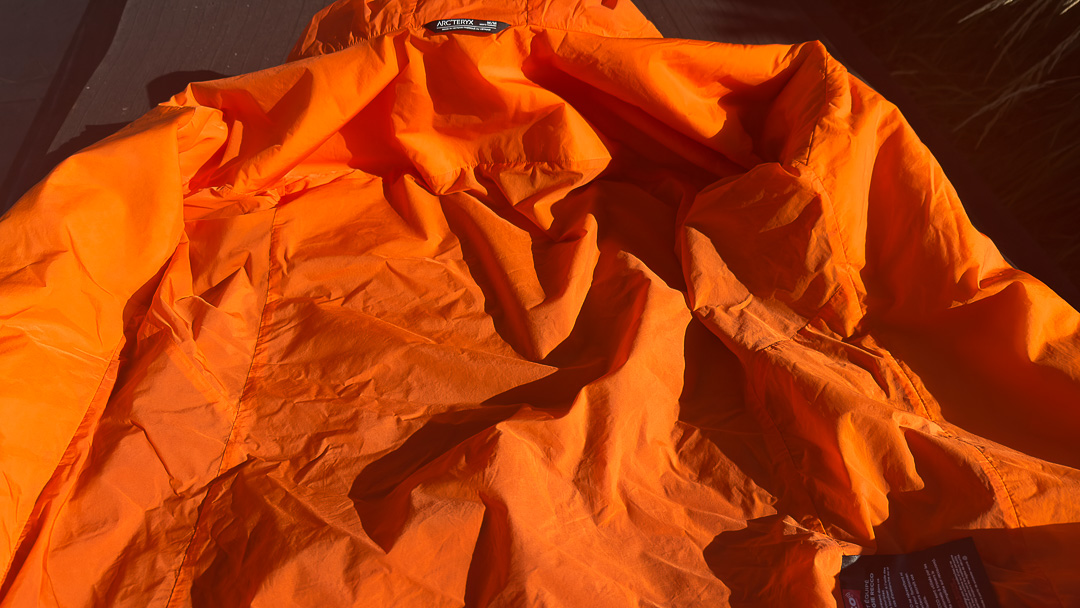
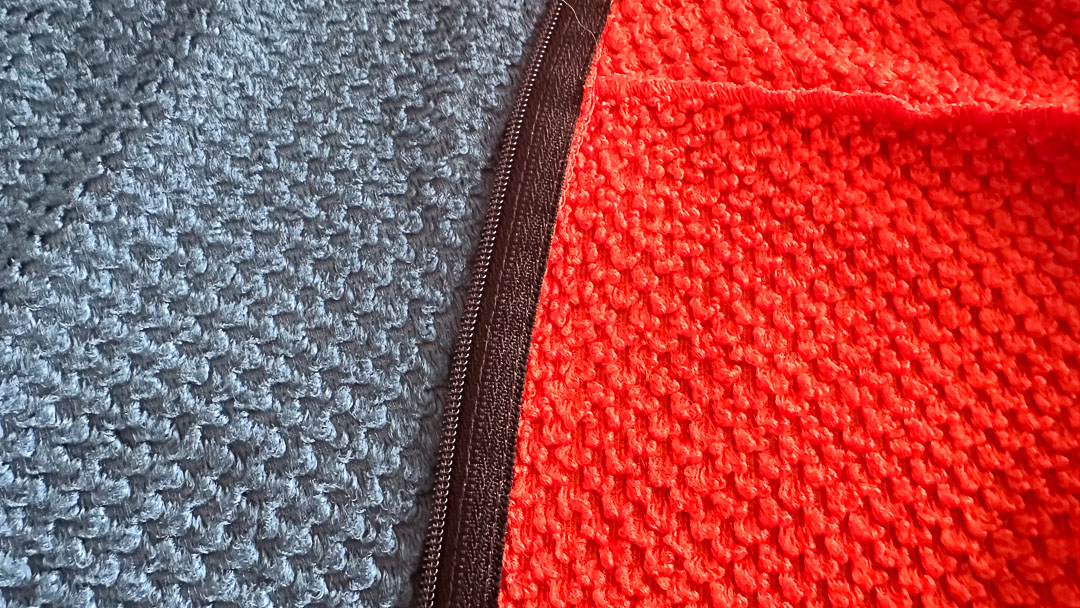
It’s worth republishing a concept introduced in the Hybrid Hoody review:
“Fabric FYI, which is intuitive: two fabrics with the same cfm but different g/m2 for insulation, say the difference between 40g/m2 and 60g/m2, feel different— their effective CFM as a material package—the combo of face fabric and insulation— create a slightly different barrier for air to pass through.”
Wearing the same base layer and in the same ambient weather conditions, the Lightweight Hoody has a perceived higher CFM, meaning it is a bit more air permeable than the Hybrid Hoody. There’s also no Gore-Fabric integrated into the build, although it has a DWR finish. The slightly higher CFM in the Lightweight Hoody has me reaching for a lightweight puffy (read Das Light) when descending in chilly/windy air. In more springtime temps, I find descending in the Lightweight Hoody with no windproof shell to feel fine. After several conversations with a friend about layering systems and active jackets like the ones discussed here, he says just forgoing the puffy and placing a simple low CFM nylon shell over these types of active insulation jackets renders them de facto puffies for the descent. The trusted friend also noted that such a system (light shell over a high CFM jacket) won’t keep you toasty if you dilly-dally at a transition or take a summit nap. The idea is to keep moving.
For use in drizzly weather, the Lightweight Hoody can work. Without going into all the details about local conditions, it has been both a hot and cold mess here. We’ve had frozen rain crusts, some weak layers thrown into the mix, and rain falling high and low. (Now it’s cold and snowy.) I recently took a nice long rambling skin in the rain wearing the Lightweight Hoody. The face fabric wet out, but I remained warm; however, the jacket’s ample air permeability got my attention on the descents.
In sunny and not-so-cold weather, skinning and transitioning without adding another layer is doable in the Lightweight Hoody. I’d say it is more condition-dependent than using the Hybrid Hoody.
For non-ski-related use, I’ve climbed in the Lightweight Hoody, and, like ski touring, you’ll likely keep the piece on all day long. Maybe, in high winds, you’ll throw a Houdini or BD Distance Shell over it or don a puffy in colder weather to add some insulation—otherwise, it’s sort of a one-jacket-to-rule-them-all piece.
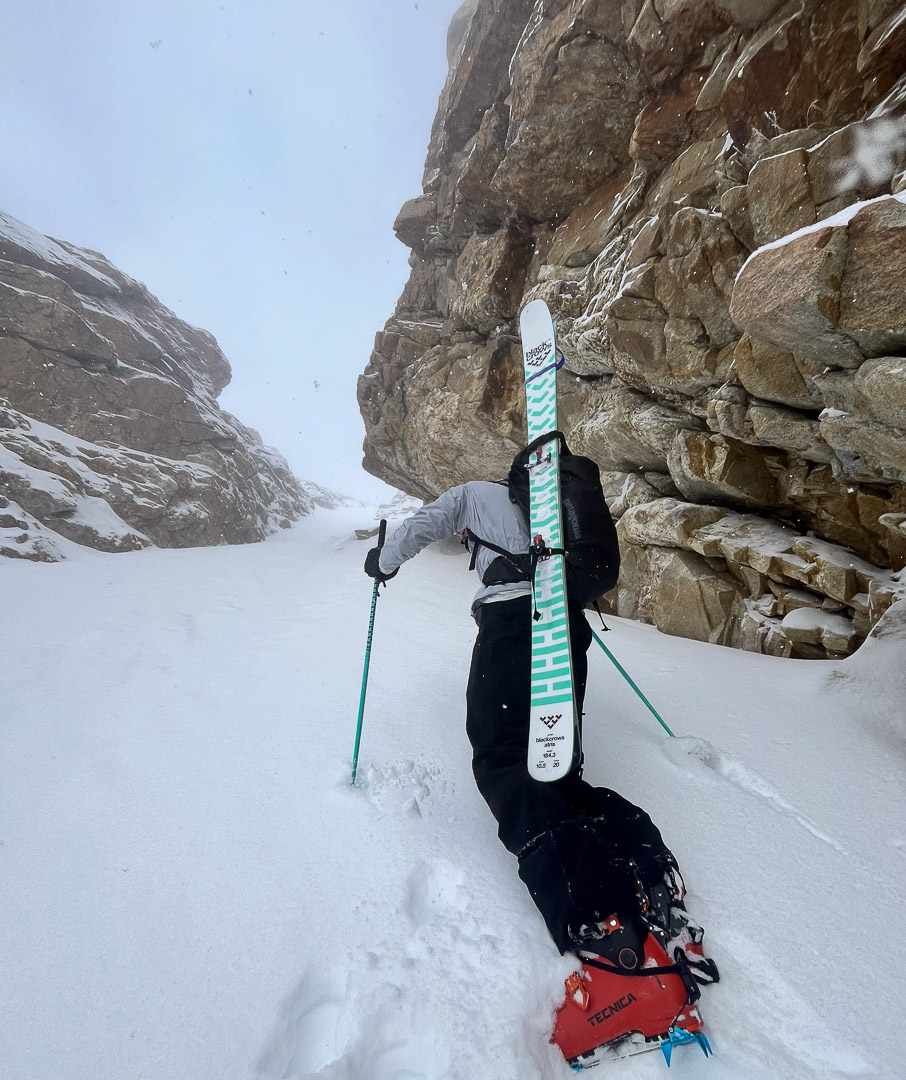
Much has been written about the predecessor to the Proton Lightweight Hoody, the Proton LT (same jacket, new name). And this is really a comparison of two current Arc’Teryx jackets that set a high high high bar for active insulation, so we’ll go short on deets. The Lightweight Hoody has a full zip, a lined helmet-compatible hood that fits nicely under a helmet, and a single chest pocket. The Hybrid Hoody has a hood that fits over a helmet and offers more moisture and wind resistance. The Hybrid Hoody also has two zippered hand pockets.
This is admittedly a decadent problem—which jacket to choose?
Maybe it falls like this—you are a skier/rider with a small climbing habit: Hybrid Hoody.
Or like this—you are a rock/alpine climber with a small touring habit: Lightweight Hoody.
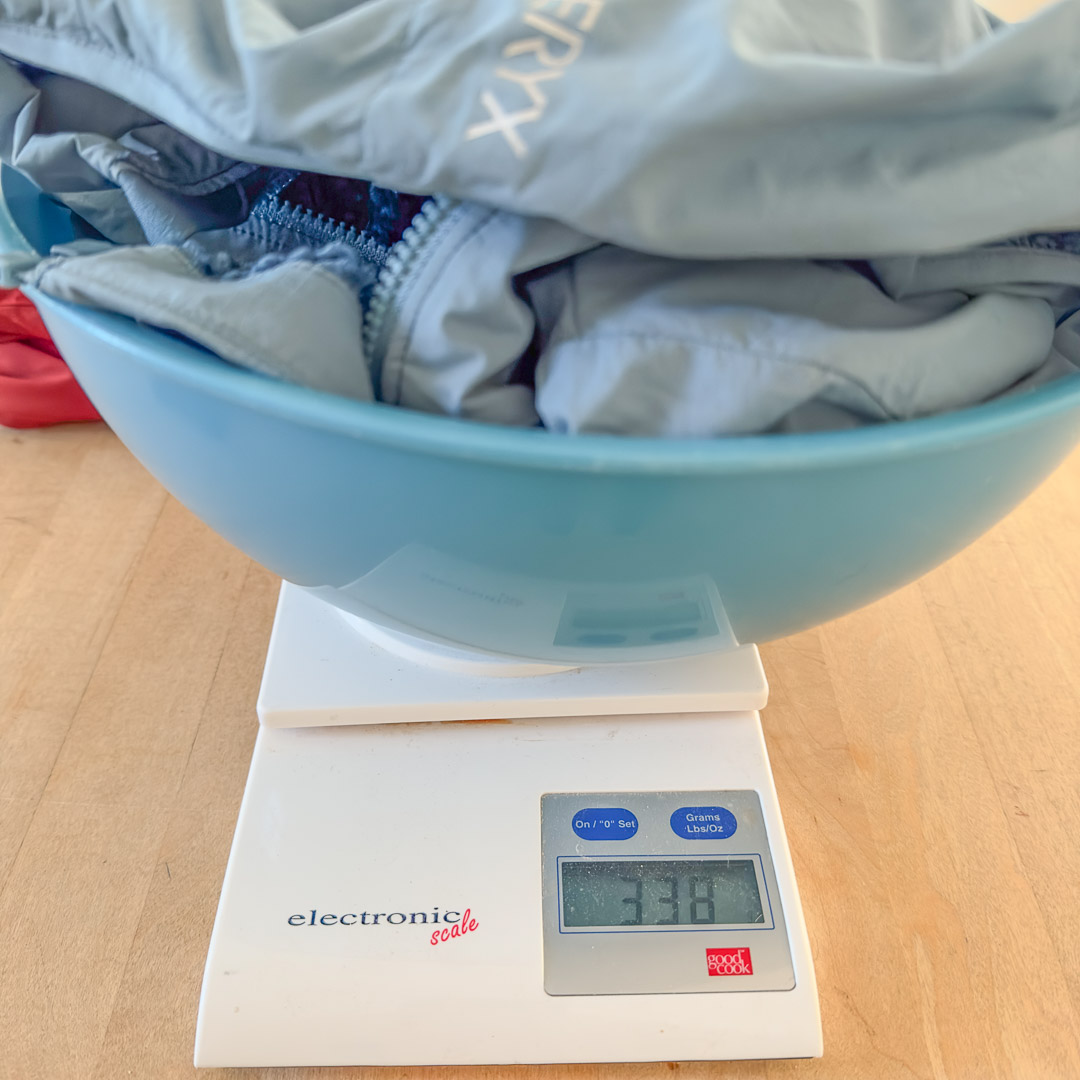
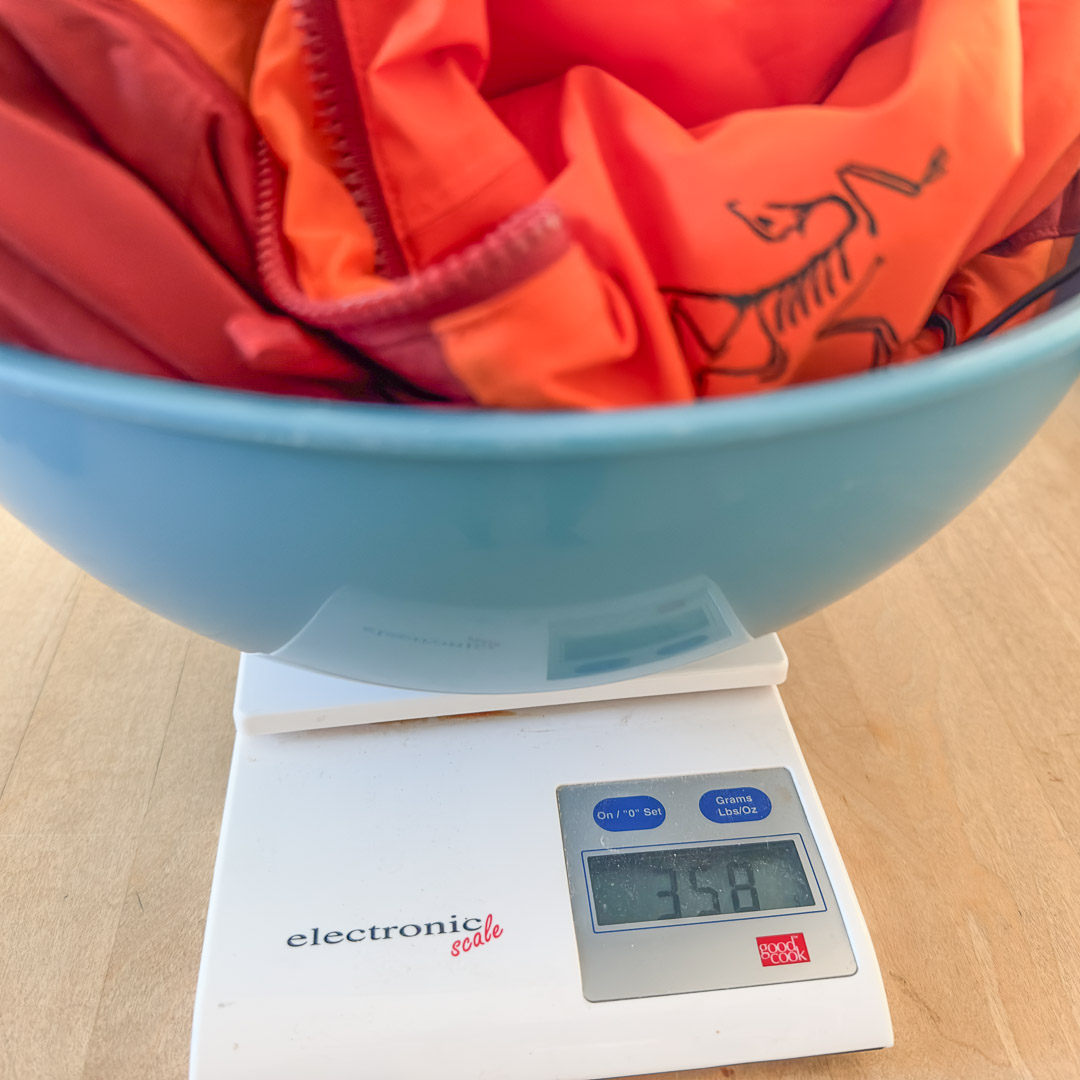
All this is written with the understanding that the Proton Lightweight Hoody (in all its naming iterations) has been a highly regarded active insulation piece for years. I’m just late on it, and I’m unsure why. I’m glad I finally bought one.
As far as I’m concerned, the whole working hypothesis for active insulation is that one can be active and not overheat, and not get too cold while puttering about. The Hybrid Hoody and Lightweight Hoody (again both with a Proton prefix) are ideal for testing this hypothesis.
I’m more concerned with getting too hot when experimenting with active insulation. I find it easier to warm up than cool off. Some other brands are catching on too, but functional active insulation for active people, from a design perspective, begins with less insulation. Considering exercising and regulating core/body temps, throwing on a puffy to warm up is easier than cooling off once your underlayers are sweat-soaked.
The common attribute, IMHO, between the Hybrid Hoody and Lightweight Hoody is that Arc’Teryx has the equation for active insulation nearly perfected.





Leave a Reply
You must be logged in to post a comment.